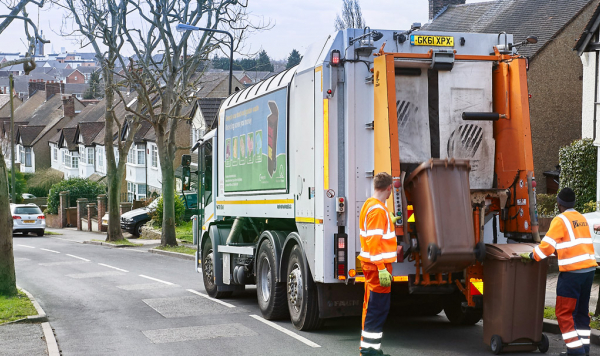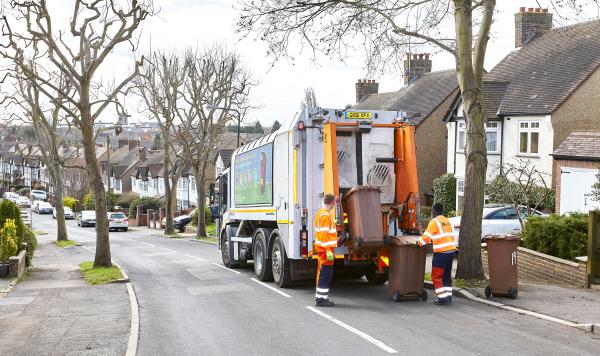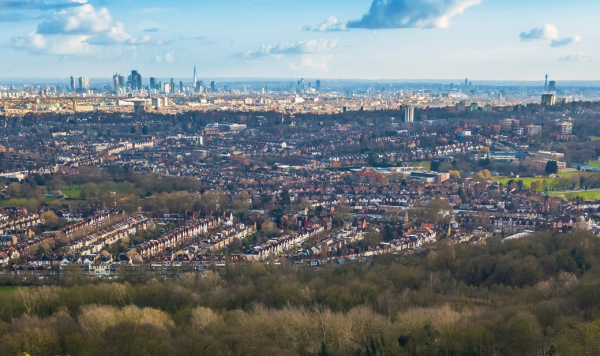Request
| I am writing to you as one of your constituents to ask about the London Borough of Enfield’s support of the proposed rebuild of the current Edmonton incinerator. I understand that it has been operating for fifty years and is now nearing the end of it‘s life. I am extremely disappointed and surprised to hear that there are plans to rebuild it and increase it’s capacity. My key concerns are as follows: Environmental Impact • The IPCC advises we should be making every effort to limit global warming to 1.5 degrees centigrade to avoid catastrophic impacts which will require ambitious action from local authorities. The waste from 7 boroughs will be incinerated in Enfield releasing as much as 700,000 tonnes of carbon dioxide into the atmosphere a year (the same amount as Hackney’s total annual carbon footprint or 450,000 new cars). • Burning waste is vastly more inefficient than burning fossil fuels. Even with expected advancements in technology in 2020 and ensuring both heat and electricity is captured and used from the burning, it is predicted that incinerators will still emit more greenhouse gases than gas power stations. How is this compatible with Enfield’s declaration of a climate emergency and plans to reach carbon neutrality by 2030? • Incineration creates a perverse incentive to produce more waste and avoid recycling, composting, reduction as well as squashing innovation in waste management and circular economy implementation. At the recent meet and greet session with NLWA at a local Tesco Extra, it was confirmed that there would be no sorting of waste prior to incineration despite NLWA’s ‘intention’ to get recycling rates to 50% (currently below 30%). A huge amount of general waste can be recycled as a result of lack of public education on recycling. • Is it not irresponsible not to leverage the latest mechanical and biological sorting technologies to extract recyclable and compostable materials? Public Health - Kings College London recently reported that high pollution days in London produce an extra 87 cardiac arrests, 144 more strokes and 74 children and 33 adults being treated in hospitals for asthma attacks. These avoidable deaths are happening right now! According to the North London Waste Authority’s own website the Incinerator produced 8,4771,906 kgs of CO2 and 24,882.89 kgs of NOx during 2017/18 from 505,864 tonnes of waste.The new incinerator is due to burn 700,000 tonnes of waste producing just over 700,000 tonnes of CO2. With its close proximity to the North Circular, it is not irresponsible to place such a grave health risk to those living and working Enfield? Cost - The projected cost for the rebuild is £650 Million which is being funded by a loan which will be repaid by the council tax levied in the 7 Boroughs. Given that Enfield Council is about to start fortnightly bin collections from April 2020 in a bid to save just £12 Million in 20/21, it seems extraordinary that LBE are supporting the rebuild. Furthermore, how do you justify spending £750K on PR associated with the rebuild. Disproportionate budget allocation - The government's own waste hierarchy guidelines state that waste prevention and recycling is preferred over incineration. How does Enfield justify spending £650m on the incinerator rebuild yet only 0.7% (£480K) of the annual waste management budget on waste prevention? Just £5,000 was allocated to projects to reduce single use plastics (http://www.nlwa.gov.uk/media/2686/wp-plan-2018-20-v2.pdf). Enfield should be investing significantly more in strategies to reduce residual waste and implementing more environmental and health friendly waste management alternatives. This would be in line with Europe who have taken a first step to phase out incinerators (see EU Action Plan for the Circular Economy). In light of these facts, should Enfield Council be reconsidering whether it supports this project? |
Response
North London Heat and Power Project is part of NLWA’s overall solution to managing north London’s waste in the most sustainable way possible, and a major part of NLWA’s efforts to tackle the Climate Emergency through waste management. NLWA has a duty to dispose of waste responsibly and does so in line with the waste hierarchy by prioritising waste prevention and recycling. Therefore, the best way for residents to reduce the carbon impact of their waste is not to produce it in the first place. To that end through our own annual programme of activities, we are supporting borough activity and helping residents prevent a further 10,000+ tonnes of material from being thrown away every year.
Where waste is produced and can’t be reused, we want as much of it as possible to be recycled. Boroughs already have collection systems which allows the widest possible range of items to be recycled; we run campaigns and education and outreach activities to boost recycling, and we have called on the Government to make recycling compulsory and give local authorities the powers to enforce correct recycling. NLHPP will help to drive up recycling rates; for the first time ever, residents will be able to bring their recyclable materials directly to Edmonton EcoPark. This centre will add to the network of centres already in place across north London that provide additional opportunities for residents to reuse and recycle and allow an anticipated further 135,000 tonnes of materials to be recycled.
However, we serve a population of over 2 million people and growing and a solution is needed for the waste that can’t be recycled. That’s why our project includes an Energy Recovery Facility (ERF); the new facility is the only proven, sustainable and cost-effective solution to treat up to 700,000 tonnes of north London’s non-recyclable waste at Edmonton EcoPark1.
Environmental impact
• Claim 1: The IPCC advises we should be making every effort to limit global warming to 1.5 degrees centigrade to avoid catastrophic impacts which will require ambitious action from local authorities. The waste from 7 boroughs will be incinerated in Enfield releasing as much as 700,000 tonnes of carbon dioxide into the atmosphere a year (the same amount as Hackney’s total annual carbon footprint or 450,000 new cars).
The claim that the new facility at Edmonton will release 700,000 tonnes of carbon dioxide each year is misleading; in fact it’s a major part of tackling the Climate Emergency and the most sustainable way of treating non-recyclable waste in north London. The climate impact of the new facility is equivalent to 28,000 tonnes of carbon dioxide when treating 700,000 tonnes of non-recyclable waste. The carbon impact is so low because we are preventing methane generation in landfill, offsetting more carbon intensive energy generation using virgin fossil fuels and enabling metals to be recycled.
In comparison the climate impact of sending 700,000 tonnes of waste to landfill is much greater; 243,000 tonnes of carbon dioxide equivalents would be generated every year. This accounts for emissions from methane generation, which is at least 25 times more potent than carbon dioxide, and transporting waste outside of London.
The climate impact of using our new facility is therefore equivalent to a 215,000-tonne carbon saving- when compared to landfill- which is like taking 110,000 cars off the road every year.
The Committee on Climate Change states the waste sector is the only UK industry to outperform its ‘carbon budget’ obligations, meaning that climate change effects are reducing much faster than targeted as landfill use is reduced. The vast majority of emissions from the waste sector are from landfill sites with less than 0.05% of the national greenhouse gas emissions figure being from waste incineration.
Claim 2: Burning waste is vastly more inefficient than burning fossil fuels. Even with expected advancements in technology in 2020 and ensuring both heat and electricity is captured and used from the burning, it is predicted that incinerators will still emit more greenhouse gases than gas power
1 For more information, please refer to the Alternatives Assessment that was submitted as part of the Development Consent Order application: northlondonheatandpower.london/media/asvicpm2/ad05-03_alternatives_assessment_lores.pdf.
stations. How is this compatible with Enfield’s declaration of a climate emergency and plans to reach carbon neutrality by 2030?
It is absolutely not true that our facility will be less efficient than burning fossil fuels and emit more greenhouse gases than gas power stations. The ambition to achieve Net Zero requires reducing waste to landfill and a move away from burning fossil fuels through a fourfold increase in low-carbon power-generation, such as that provided by our replacement energy recovery facility. A modern, efficient facility to recover energy from waste instead of sending it to landfill is part of this solution.
The ERF will generate 78 megawatts of electricity which can supply heat and enough power for up to 127,000 homes, with excellent efficiency levels (close to 100% for heat generation). This compares to 40% thermal efficiency for coal-fired power stations and 56% for natural gas, meaning that, with coal and gas, a large amount of the energy input is wasted.
The cleaner energy produced by our facility will have carbon efficiency rates at 25% better than the Mayor of London’s target (known as the Carbon Intensity Floor target, which ensures that energy generated from waste activities is no more polluting in carbon terms than the energy source it replaces).
Claim 3: Incineration creates a perverse incentive to produce more waste and avoid recycling, composting, reduction as well as squashing innovation in waste management and circular economy implementation. At the recent meet and greet session with NLWA at a local Tesco Extra, it was confirmed that there would be no sorting of waste prior to incineration despite NLWA’s ‘intention’ to get recycling rates to 50% (currently below 30%). A huge amount of general waste can be recycled as a result of lack of public education on recycling. Is it not irresponsible not to leverage the latest mechanical and biological sorting technologies to extract recyclable and compostable materials?
There is absolutely no evidence that using energy recovery stops people recycling and creates more waste.
Across Europe and the UK, high recycling rates go hand-in-hand with energy from waste facilities. Facilities like ours are used by several UK councils with exceptionally high recycling rates above 60%, such as South Oxfordshire District Council and Stratford-upon-Avon. The Netherlands, Germany and Austria all recycle more than 50% of their waste and treat most of the rest through energy from waste facilities. NLWA is committed to working with the boroughs to drive up recycling rates, as it is the boroughs that ultimately collect the waste that is then presented to NLWA facilities. The NLWA has a 50% recycling rate as its target that has been included in the NLHPP project. However, given the necessity to produce high quality recyclables that have a genuine market for onward processing the extraction of quality recyclables from black bag waste is extremely difficult. When recyclable materials get mixed with black bag waste, including food waste, they become contaminated, making it very expensive to extract them and significantly reducing the quality of the recyclable material. That’s why NLWA works hard to encourage residents to put their waste in the correct bins to maximise the amount of material that can be sorted at our materials recovery facilities and then recycled.
Public health
• Claim 4: Kings College London recently reported that high pollution days in London produce an extra 87 cardiac arrests, 144 more strokes and 74 children and 33 adults being treated in hospitals for asthma attacks. These avoidable deaths are happening right now! According to the North London Waste
Authority’s own website the Incinerator produced 8,4771,906 kgs of CO2 and 24,882.89 kgs of NOx during 2017/18 from 505,864 tonnes of waste. The new incinerator is due to burn 700,000 tonnes of waste producing just over 700,000 tonnes of CO2. With its close proximity to the North Circular, it is not irresponsible to place such a grave health risk to those living and working Enfield? t is not accurate to suggest that energy from waste facilities place grave health risks on people living close to them as there is no evidence to suggest this.
NLWA is going beyond statutory requirements to ensure that the new facility is one of the cleanest and safest in the world. The safest technology known as Selective Catalytic Reduction is being invested in for the removal of nitrogen dioxide (NOx). While the current facility operates at 20% better than permitted levels of NOx emissions, the new facility will perform at 60% better than the required safe levels.
Using this technology means the facility will always meet the Environment Agency’s strict standards as they change over time. In setting the emissions limits within the permit, the Environment Agency takes account of background levels of air quality. Furthermore, our analysis shows that the new facility does not breach any local concentrations of pollutants in air quality standards.
As a public authority our responsibility to protect the health of our residents is at the forefront of everything we do. Public Health England, which advises the Government nationally, says modern and well-regulated Energy from Waste plants like ours make only a small contribution to overall pollution levels, which are primarily caused by other sources.
Yes, we will be treating up to 700,000 tonnes per year by 2050, however the climate impact of our new facility is not like adding 700,000 tonnes of CO2 into the atmosphere each year. The facility will in fact form part of the solution for tackling the Climate Emergency by saving the equivalent of 215,000 tonnes of CO2 compared to sending 700,000 tonnes of waste to landfill each year.
I would suggest that more attention is actually given to the negative impacts of car use, as a far more pressing issue in relation to our public health.
Cost allocation
• Claim 5: The projected cost for the rebuild is £650 Million which is being funded by a loan which will be repaid by the council tax levied in the 7 Boroughs. Given that Enfield Council is about to start fortnightly bin collections from April 2020 in a bid to save just £12 Million in 20/21, it seems extraordinary that LBE are supporting the rebuild. Furthermore, how do you justify spending £750K on PR associated with the rebuild.
Enfield Council along with all other north London boroughs support this Project because it is the only suitable and sustainable solution for the volumes of non-recyclable waste that we need to treat at Edmonton EcoPark.
Our new facility is modelled on achieving 50% recycling. In addition, Enfield’s proposal to limit residual collections to fortnightly further supports the work being carried out to encourage increased recycling rates because it encourages people to put out less black bin waste.
The other options to treat waste simply do not work: landfill is significantly worse for the environment and more expensive; using third party energy from waste facilities is more expensive and would add thousands of lorry movements to our road network; advanced thermal treatment is unproven at the scale we need; mechanical biological treatment is more expensive and produces fuel that needs to be burned anyway; and anaerobic digestion and materials recycling facilities are already used by NLWA to treat separately collected organic waste and recycling, but can’t be used for unrecyclable waste.
Any option other than replacing the facility, would therefore cost significantly more for north London, as well as having far worse environmental impacts.
The total investment needed to deliver the project includes £600m for the replacement Energy Recovery Facility, as well as additional facilities to help reach our 50% recycling target including a state of the art Resource Recovery Facility- which when it opens in 2023 will be the most advanced in the UK- and a new Household Waste and Recycling Centre, an education centre, risk management and technical input which total £1.2bn. Delivering this project at the lowest possible cost for north London’s resident is an imperative for us. Based on our project’s environmental merits and societal benefits, we have successfully secured a £100m loan at the government’s discount Local Infrastructure Rate for local authority projects which demonstrates high value for money. In addition, NLWA – as a public authority – is able to borrow from sources such as the Public Works Loan Board and bonds – to secure finance at the lowest cost. A major advantage of this project being publicly funded and publicly delivered is that borrowing costs are lower than any private company can achieve. A further breakdown of the overall programme cost is available on the NLHPP website here.
In the short to medium term, NLWA forecasts that there will be no significant changes to the levy – which only makes up about 3% of the boroughs’ total net expenditure. Each borough determines the
appropriate level of council tax in their areas and this arrangement will continue when the new facility is built. The project is well underway and by 2026 a world-class facility will be operational in north London. The costs will be paid over a 40-year period once the facility is open. The cost of treating waste in north London is, and will continue to be, very low compared to costs in the open market.
Budgeting for Stakeholder Engagement over the 10-year lifespan of this nationally significant infrastructure project is completely justified and follows best practice. NLWA is committed to being a good neighbour and it is imperative to build long-standing relationships with the local community over the construction period and beyond. We’re working hard with a dedicated stakeholder engagement team to communicate regularly and transparently with the local community via construction and community newsletters, roadshows, community liaison group meetings, works notifications, and by responding to stakeholder enquiries, which we will continue to do so throughout the lifespan of the project.
Claim 6: The government's own waste hierarchy guidelines state that waste prevention and recycling is preferred over incineration. How does Enfield justify spending £650m on the incinerator rebuild yet only 0.7% (£480K) of the annual waste management budget on waste prevention? Just £5,000 was allocated to projects to reduce single use plastics (http://www.nlwa.gov.uk/media/2686/wp-plan-2018-20-v2.pdf). Enfield should be investing significantly more in strategies to reduce residual waste and implementing more environmental and health friendly waste management alternatives. This would be in line with Europe who have taken a first step to phase out incinerators (see EU Action Plan for the Circular Economy). In light of these facts, should Enfield Council be reconsidering whether it supports this project?
It is not true that the EU is phasing out energy from waste. On the contrary, the EU Action Plan2 for the Circular Economy specifically states that “When waste cannot be prevented or recycled, recovering its energy content is in most cases preferable to landfilling it, in both environmental and economic terms. ‘Waste to energy’ can therefore play a role and create synergies with EU energy and climate policy, but guided by the principles of the EU waste hierarchy”. Energy recovery is used by some of the most successful recyclers in the world, including Denmark and Sweden, and we are following their example with our project in Edmonton. Investing in the NLHPP is fully consistent with our drive for increased recycling and waste reduction.
It is not true that 0.7% of NLWA’s annual budget was spent on waste prevention. In 2019/20, £1.8m (2.6%) of the annual budget was spent on activities to reduce waste and increase recycling in north London. NLWA’s waste prevention programme is one of the biggest in the country and involves a wide ranging programme of initiatives, education and outreach activities to help our residents reduce their waste, increase recycling and ensure they put the right materials in the right bin.
It is also not true that only £5,000 was spent on reducing single use plastics. Several of our campaigns encourage the reduction of plastics. One of our ground-breaking campaigns this year, and we believe the first of its kind in London, was the introduction of low plastic zones across north London to reduce the amount of single use plastics used by businesses on the high street.
The £5,000 pilot campaign is part of our wider waste prevention strategy, and if successful we hope to roll out further.
The vast majority of NLWA’s budget is spent on processing recycling and non-recyclable waste in the most sustainable way possible – now and in the future. The best use of public money is reducing waste in the first place.
We campaign for the Government to give local authorities the powers to make correct recycling compulsory, and support initiatives such as deposit return schemes and extended producer responsibility schemes, which make producers more responsible for the packaging they produce. Everyone – manufacturers, residents and the Government – needs to do their bit to reduce the economic and environmental cost of the waste we produce.
You can see our consultation responses on NLWA’s website: http://nlwa.gov.uk/consultations/our- responses/.
2EU Action Plan for the Circular Economy northlondonheatandpower.london/media/asvicpm2/ad05- 03_alternatives_assessment_lores.pdf.
I hope the above reassures residents why the NLHPP is critical in helping NLWA to tackle the Climate Emergency as we fulfil our statutory duty to dispose of north London’s non-recyclable waste, as well as being a vital community asset for the residents of north London. Please do not hesitate to contact info@northlondonheatandpower.london with any further enquiries, or alternatively please refer to the FAQs section of our website www.northlondonheatandpower.london/faqs/.
 Hornsey Street pedestrian drop-off area
Hornsey Street pedestrian drop-off area



